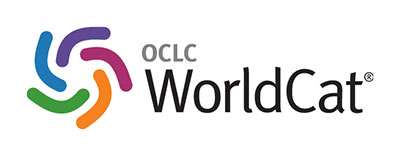Soy Protein Diet Improves Nutritional Status of Offspring with Intrauterine Growth Restriction: A Scoping Review
DOI:
https://doi.org/10.28932/jmh.v5i2.6175Keywords:
low protein diet, fetal programming, soy proteinAbstract
The intake of a low-protein diet during pregnancy can lead to alteration of fetal programming with long-term postnatal consequences exposing offspring with malnutrition to metabolic syndrome in adulthood. Accordingly, a more affordable alternative source of protein, such as soy, is used to improve nutrition. The objective of this study was to examine the advantages and disadvantages of soy as an alternative protein source to improve offspring nutrition with Intrauterine Growth Restriction (IUGR). The method used was a scoping review, and the design was selected to provide coverage on a certain topic with the concepts from available literature. Systematic searches were performed in six databases: PubMed, EBSCO, ScienceDirect, SCOPUS, Sage Journals, and Cochrane Library. Data collection included reports published from January 2013 to January 2023. Nine articles meeting the inclusion criteria were obtained and analyzed for review. Protein from a plant source is considered a good alternative in restoring nutrition to malnourished offspring in early life. Furthermore, the dietary deficiency of soy can be corrected with close monitoring. As a conclusion, the quality of life of offspring with IUGR is improved through a well-planned supplementation.Downloads
References
Mousa A, Naqash A, Lim S. Macronutrient and Micronutrient Intake during Pregnancy: An Overview of Recent Evidence. Nutrients. 2019;11(2). Mohon dilengkapi halaman
Fleming TP, Watkins AJ, Sun C, Velazquez MA, Smyth NR, Eckert JJ. Do little embryos make big decisions? How maternal dietary protein restriction can permanently change an embryo’s potential, affecting adult health. Reproduction, fertility, and development. 2015;27(4):684–92.
Hsu CN, Tain YL. The Good, the Bad, and the Ugly of Pregnancy Nutrients and Developmental Programming of Adult Disease. Nutrients. 2019;11(4).
Christoforou ER, Sferruzzi-Perri AN. Molecular mechanisms governing offspring metabolic programming in rodent models of in utero stress. Cellular and molecular life sciences : CMLS. 2020;77(23):4861–98.
Herring CM, Bazer FW, Johnson GA, Wu G. Impacts of maternal dietary protein intake on fetal survival, growth, and development. Experimental biology and medicine (Maywood, NJ). 2018;243(6):525–33.
Marciniak A, Patro-Malysza J, Kimber-Trojnar Z, Marciniak B, Oleszczuk J, Leszczynska Gorzelak B. Fetal programming of the metabolic syndrome. Taiwanese journal of obstetrics & gynecology. 2017;56(2):133–8.
Bryda EC. The Mighty Mouse: the impact of rodents on advances in biomedical research. Missouri medicine. 2013;110(3):207–11.
Tarry-Adkins JL, Martin-Gronert MS, Fernandez-Twinn DS, Hargreaves I, Alfaradhi MZ, Land JM, et al. Poor maternal nutrition followed by accelerated postnatal growth leads to alterations in DNA damage and repair, oxidative and nitrosative stress, and oxidative defense capacity in rat heart. FASEB journal. 2013;27(1):379–90.
Eriksson JG, Forsén TJ, Kajantie E, Osmond C, Barker DJP. Childhood growth and hypertension in later life. Hypertension (Dallas, Tex : 1979). 2007;49(6):1415–21.
Neitzke U, Harder T, Schellong K, Melchior K, Ziska T, Rodekamp E, et al. Intrauterine growth restriction in a rodent model and developmental programming of the metabolic syndrome: a critical appraisal of the experimental evidence. Placenta. 2008;29(3):246–54.
Tang Q, Roos YH, Miao S. Plant Protein versus Dairy Proteins: A pH-Dependency Investigation on Their Structure and Functional Properties. Foods (Basel, Switzerland). 2023;12(2).
Arksey H, O’Malley L. Scoping studies: towards a methodological framework. International Journal of Social Research Methodology. 2005;8(1):19–32.
Moher D, Liberati A, Tetzlaff J, Altman DG. Preferred reporting items for systematic reviews and meta-analyses: the PRISMA statement. PLoS medicine. 2009;6(7):e1000097.
Ijaz MU, Ahmed MI, Zou X, Hussain M, Zhang M, Zhao F, et al. Beef, Casein, and Soy Proteins Differentially Affect Lipid Metabolism, Triglycerides Accumulation and Gut Microbiota of High-Fat Diet-Fed C57BL/6J Mice. Frontiers in microbiology. 2018;9:2200.
Lemes SF, Lima FM, de Almeida APC, Ramalho A de FS, Reis SR de L, Michelotto LF, et al. Nutritional recovery with okara diet prevented hypercholesterolemia, hepatic steatosis and glucose intolerance. International journal of food sciences and nutrition. 2014;65(6):745–53.
Alheiros-Lira MC, Araujo LL, Trindade NGV, da Silva EMS, Cavalcante TCF, de Santana Muniz G, et al. Short- and long-term effects of a maternal low-energy diet ad libitum during gestation and/or lactation on physiological parameters of mothers and male offspring. European Journal of Nutrition. 2015;54(5):793–802.
de Almeida Brasiel PG, Schuchter Ferreira M, Vieira AM, Sarto Figueiredo M, Cristina Lisboa P, Gaspar de Moura E, et al. Maternal soy protein isolate diet during lactation programmes to higher metabolic risk in adult male offspring. International journal of food sciences and nutrition. 2020;71(8):954–64.
Wroblewska B, Juskiewicz J, Kroplewski B, Jurgonski A, Wasilewska E, Zlotkowska D, et al. The effects of whey and soy proteins on growth performance, gastrointestinal digestion, and selected physiological responses in rats. Food & function. 2018;9(3):1500–9.
Yan L, Graef GL, Claycombe KJ, Johnson LK. Effects of voluntary running and soy supplementation on diet-induced metabolic disturbance and inflammation in mice. Journal of agricultural and food chemistry. 2013;61(39):9373–9.
Zeng B, Wang D, Wang H, Chen T, Luo J, Xi Q, et al. Dietary Soy Protein Isolate Attenuates Intestinal Immunoglobulin and Mucin Expression in Young Mice Compared with Casein. Nutrients. 2020;12(9).
Sreeja S, Geetha R, Priyadarshini E, Bhavani K, Anuradha CV. Substitution of soy protein for casein prevents oxidative modification and inflammatory response induced in rats fed high fructose diet. ISRN inflammation. 2014;2014:641096.
Nakamura S, Kuda T, Midorikawa Y, Takahashi H, Kimura B. Typical gut indigenous bacteria in ICR mice fed a soy protein-based normal or low-protein diet. Current research in food science. 2021;4:295–300.
Kuku-Shittu O, Onabanjo O, Fadare O, Oyeyemi M. Child malnutrition in Nigeria: Evidence from Kwara State. International Food Policy Research Institute. 2016;33:1–53.
Alozie Y, Iyam M, Lawal O, Udofia U, Ani I. Utilization of bambara groundnut flour blends in bread production. J Food Technol. 2009;7:111–4.
Choi MJ, Jung SH. Effects of Dietary Casein, Soy, and Methionine-Supplemented Soy on Serum Lipids Level in Rats. Preventive Nutrition and Food Science. 2002;7.
Torreggiani M, Fois A, D’Alessandro C, Colucci M, Orozco Guillén AO, Cupisti A, et al. Of Mice and Men: The Effect of Maternal Protein Restriction on Offspring’s Kidney Health. Are Studies on Rodents Applicable to Chronic Kidney Disease Patients? A Narrative Review. Nutrients. 2020;12(6).
Jamilian M, Asemi Z. The Effect of Soy Intake on Metabolic Profiles of Women With Gestational Diabetes Mellitus. The Journal of clinical endocrinology and metabolism. 2015;100(12):4654–61.
Bonacasa B, Siow RCM, Mann GE. Impact of dietary soy isoflavones in pregnancy on fetal programming of endothelial function in offspring. Microcirculation. 2011;18(4):270–85.
Attini R, Leone F, Parisi S, Fassio F, Capizzi I, Loi V, et al. Vegan-vegetarian low-protein supplemented diets in pregnant CKD patients: fifteen years of experience. BMC nephrology. 2016;17(1):132.
Kalantar-Zadeh K, Gutekunst L, Mehrotra R, Kovesdy CP, Bross R, Shinaberger CS, et al. Understanding sources of dietary phosphorus in the treatment of patients with chronic kidney disease. Clinical journal of the American Society of Nephrology : CJASN. 2010;5(3):519–30.
D’Alessandro C, Piccoli GB, Cupisti A. The “phosphorus pyramid”: a visual tool for dietary phosphate management in dialysis and CKD patients. BMC nephrology. 2015;16:9.
Scialla JJ, Appel LJ, Wolf M, Yang W, Zhang X, Sozio SM, et al. Plant protein intake is associated with fibroblast growth factor 23 and serum bicarbonate levels in patients with chronic kidney disease: the Chronic Renal Insufficiency Cohort study. Journal of renal nutrition. 2012;22(4):379-388.e1.
Cases A, Cigarrán-Guldrís S, Mas S, Gonzalez-Parra E. Vegetable-Based Diets for Chronic Kidney Disease? It Is Time to Reconsider. Nutrients. 2019;11(6).
Jing Z, Wei-Jie Y. Effects of soy protein containing isoflavones in patients with chronic kidney disease: A systematic review and meta-analysis. Clinical nutrition. 2016;35(1):117–24.
Che L, Hu L, Zhou Q, Peng X, Liu Y, Luo Y, et al. Microbial insight into dietary protein source affects intestinal function of pigs with intrauterine growth retardation. European Journal of Nutrition. 2020;59(1):327–44.
Velasquez MT, Bhathena SJ. Role of dietary soy protein in obesity. International journal of medical sciences. 2007;4(2):72–82.
Jahan-Mihan A, Smith CE, Hamedani A, Anderson GH. Soy protein-based compared with casein-based diets fed during pregnancy and lactation increase food intake and characteristics of metabolic syndrome less in female than male rat offspring. Nutrition research. 2011;31(8):644–51.
Bautista CJ, Guzmán C, Rodríguez-González GL, Zambrano E. Improvement in metabolic effects by dietary intervention is dependent on the precise nature of the developmental programming challenge. Journal of developmental origins of health and disease. 2015;6(4):327–34.
Jahan-Mihan A, Labyak CA, Arikawa AY. The effect of characteristics of proteins fed during gestation and lactation on development of metabolic syndrome in dams and male offspring of Wistar rats. Obesity science & practice. 2017;3(2):224–32.
Shahkhalili Y, Blancher-Budin F, Monnard C, Moulin J, Sanchez-Garcia J, Macé K. Whey Versus Casein as a Protein Source during the Weaning Period: Impact on Growth and Later Adiposity and Glucose Homeostasis in a Rat Model of Intrauterine Growth Restriction. Nutrients. 2020;12(11).
Melina V, Craig W, Levin S. Position of the Academy of Nutrition and Dietetics: Vegetarian Diets. Journal of the Academy of Nutrition and Dietetics. 2016;116(12):1970–80.
Qiu C, Coughlin KB, Frederick IO, Sorensen TK, Williams MA. Dietary fiber intake in early pregnancy and risk of subsequent preeclampsia. American journal of hypertension. 2008;21(8):903–9.
Frederick IO, Williams MA, Dashow E, Kestin M, Zhang C, Leisenring WM. Dietary fiber, potassium, magnesium and calcium in relation to the risk of preeclampsia. The Journal of reproductive medicine. 2005;50(5):332–44.
Grieger JA, Grzeskowiak LE, Clifton VL. Preconception dietary patterns in human pregnancies are associated with preterm delivery. The Journal of nutrition. 2014;144(7):1075–80.
Mikkelsen TB, Osterdal ML, Knudsen VK, Haugen M, Meltzer HM, Bakketeig L, et al. Association between a Mediterranean-type diet and risk of preterm birth among Danish women: a prospective cohort study. Acta obstetricia et gynecologica Scandinavica. 2008;87(3):325–30.
Tieu J, Shepherd E, Middleton P, Crowther CA. Dietary advice interventions in pregnancy for preventing gestational diabetes mellitus. The Cochrane database of systematic reviews. 2017;1(1):CD006674.
Hughes GJ, Ryan DJ, Mukherjea R, Schasteen CS. Protein digestibility-corrected amino acid scores (PDCAAS) for soy protein isolates and concentrate: criteria for evaluation. Journal of agricultural and food chemistry. 2011;59(23):12707–12.
Cupisti A, D’Alessandro C, Ghiadoni L, Morelli E, Panichi V, Barsotti G. Effect of a soy protein diet on serum lipids of renal transplant patients. Journal of Renal Nutrition. 2004;14(1):31–5.
Zhang J, Liu J, Su J, Tian F. The effects of soy protein on chronic kidney disease: a meta-analysis of randomized controlled trials. European journal of clinical nutrition. 2014;68(9):987–93.
Cupisti A, Ghiadoni L, D’Alessandro C, Kardasz I, Morelli E, Panichi V, et al. Soy protein diet improves endothelial dysfunction in renal transplant patients. Nephrology, dialysis, transplantation : official publication of the European Dialysis and Transplant Association - European Renal Association. 2007;22(1):229–34.
Siefker K, DiSilvestro RA. Safety and antioxidant effects of a modest soy protein intervention in hemodialysis patients. Journal of medicinal food. 2006;9(3):368–72.
Azadbakht L, Atabak S, Esmaillzadeh A. Soy protein intake, cardiorenal indices, and C-reactive protein in type 2 diabetes with nephropathy: a longitudinal randomized clinical trial. Diabetes care. 2008;31(4):648–54.
Yu J, Bi X, Yu B, Chen D. Isoflavones: Anti-Inflammatory Benefit and Possible Caveats. Vol. 8, Nutrients. 2016.
Vitale DC, Piazza C, Melilli B, Drago F, Salomone S. Isoflavones: estrogenic activity, biological effect and bioavailability. European journal of drug metabolism and pharmacokinetics. 2013;38(1):15–25.
Koebnick C, Hoffmann I, Dagnelie PC, Heins UA, Wickramasinghe SN, Ratnayaka ID, et al. Long-term ovo-lacto vegetarian diet impairs vitamin B-12 status in pregnant women. The Journal of nutrition. 2004;134(12):3319–26.
Koebnick C, Heins UA, Dagnelie PC, Wickramasinghe SN, Ratnayaka ID, Hothorn T, et al. Longitudinal concentrations of vitamin B(12) and vitamin B(12)-binding proteins during uncomplicated pregnancy. Clinical chemistry. 2002;48(6 Pt 1):928–33.
Elsori DH, Hammoud MS. Vitamin D deficiency in mothers, neonates and children. The Journal of steroid biochemistry and molecular biology. 2018;175:195–9.
Alwan NA, Greenwood DC, Simpson NAB, McArdle HJ, Godfrey KM, Cade JE. Dietary iron intake during early pregnancy and birth outcomes in a cohort of British women. Human reproduction. 2011;26(4):911–9.
Jahan-Mihan A, Szeto IMY, Luhovyy BL, Huot PSP, Anderson GH. Soya protein- and casein-based nutritionally complete diets fed during gestation and lactation differ in effects on characteristics of the metabolic syndrome in male offspring of Wistar rats. The British journal of nutrition. 2012;107(2):284–94.
Jahan-Mihan A. The Effect of Maternal Intact Protein- and Amino Acid-Based Diets on Development of Food Intake Regulatory Systems and Body Weight in Dams and Male Offspring of Wistar Rats. International journal of molecular sciences. 2019;20(7).
Hoffman JR, Falvo MJ. Protein - Which is Best? Journal of sports science & medicine. 2004;3(3):118–30.
Luiking YC, Deutz NEP, Jäkel M, Soeters PB. Casein and soy protein meals differentially affect whole-body and splanchnic protein metabolism in healthy humans. The Journal of nutrition. 2005;135(5):1080–7.
Tang JE, Moore DR, Kujbida GW, Tarnopolsky MA, Phillips SM. Ingestion of whey hydrolysate, casein, or soy protein isolate: effects on mixed muscle protein synthesis at rest and following resistance exercise in young men. Journal of applied physiology. 2009;107(3):987–92.
Zulyniak MA, de Souza RJ, Shaikh M, Desai D, Lefebvre DL, Gupta M, et al. Does the impact of a plant-based diet during pregnancy on birth weight differ by ethnicity? A dietary pattern analysis from a prospective Canadian birth cohort alliance. BMJ open. 2017;7(11):e017753.
Ríos-Covián D, Ruas-Madiedo P, Margolles A, Gueimonde M, de Los Reyes-Gavilán CG, Salazar N. Intestinal Short Chain Fatty Acids and their Link with Diet and Human Health. Frontiers in microbiology. 2016;7:185.
Downloads
Published
How to Cite
Issue
Section
License
Copyright (c) 2023 Rimonta F Gunanegara, Rafhani Rosyidah , Agung Dewanto , Sunarti

This work is licensed under a Creative Commons Attribution-NonCommercial 4.0 International License.
Authors who publish with this journal agree to the following terms:
- Authors retain the copyright and grant the journal right of first publication with the work
simultaneously licensed under a Creative Commons Attribution-NonCommercial 4.0 International License that allows others to share the work with an acknowledgement of the work's authorship and initial publication in this journal. - Authors are able to enter into separate, additional contractual arrangements for the nonexclusive distribution of the journal's published version of the work (e.g., post it to an institutional repository or publish it in a book), with an acknowledgement of its initial publication in this journal.
 This work is licensed under a Creative Commons Attribution-NonCommercial 4.0 International License.
This work is licensed under a Creative Commons Attribution-NonCommercial 4.0 International License.















